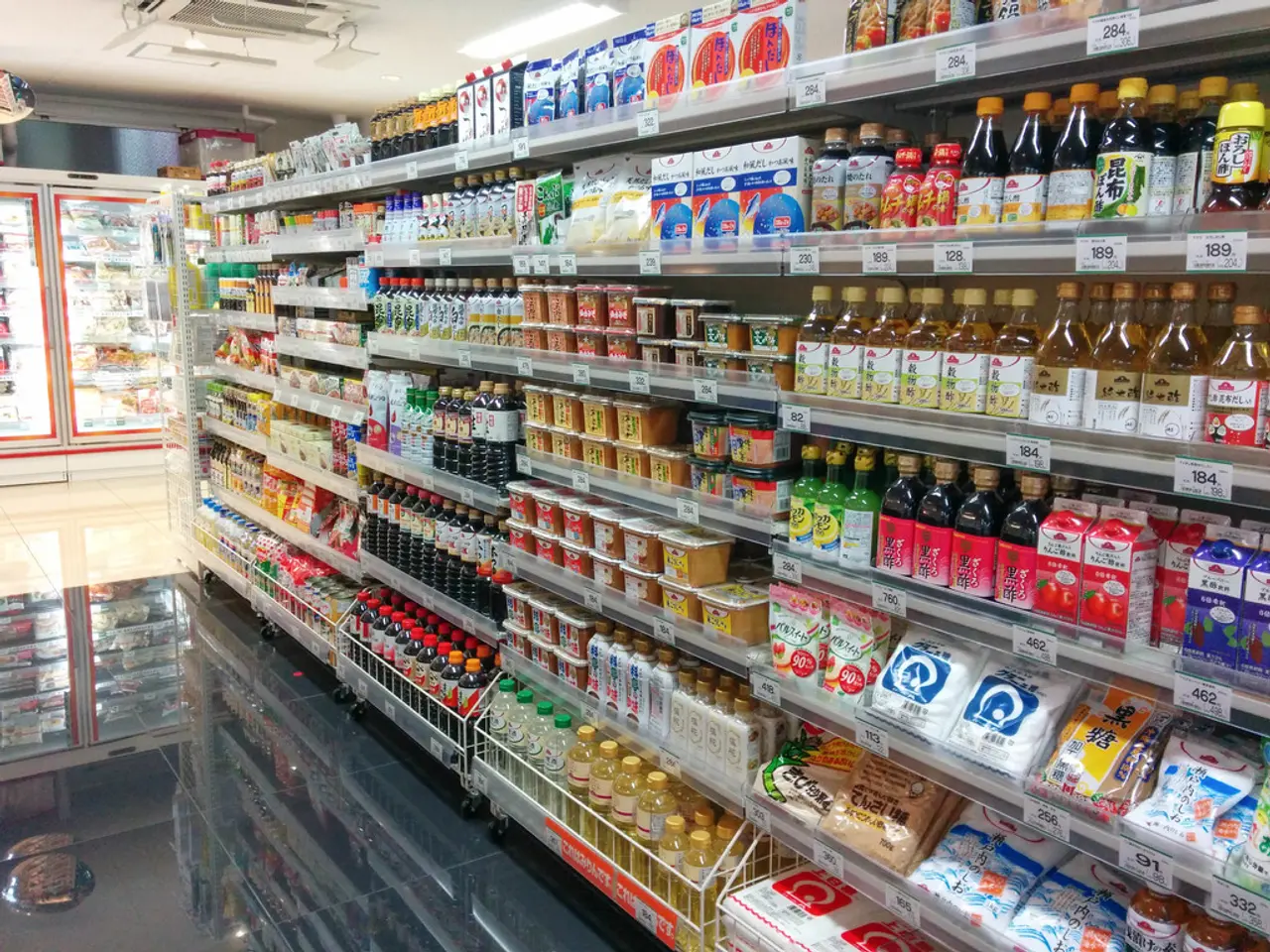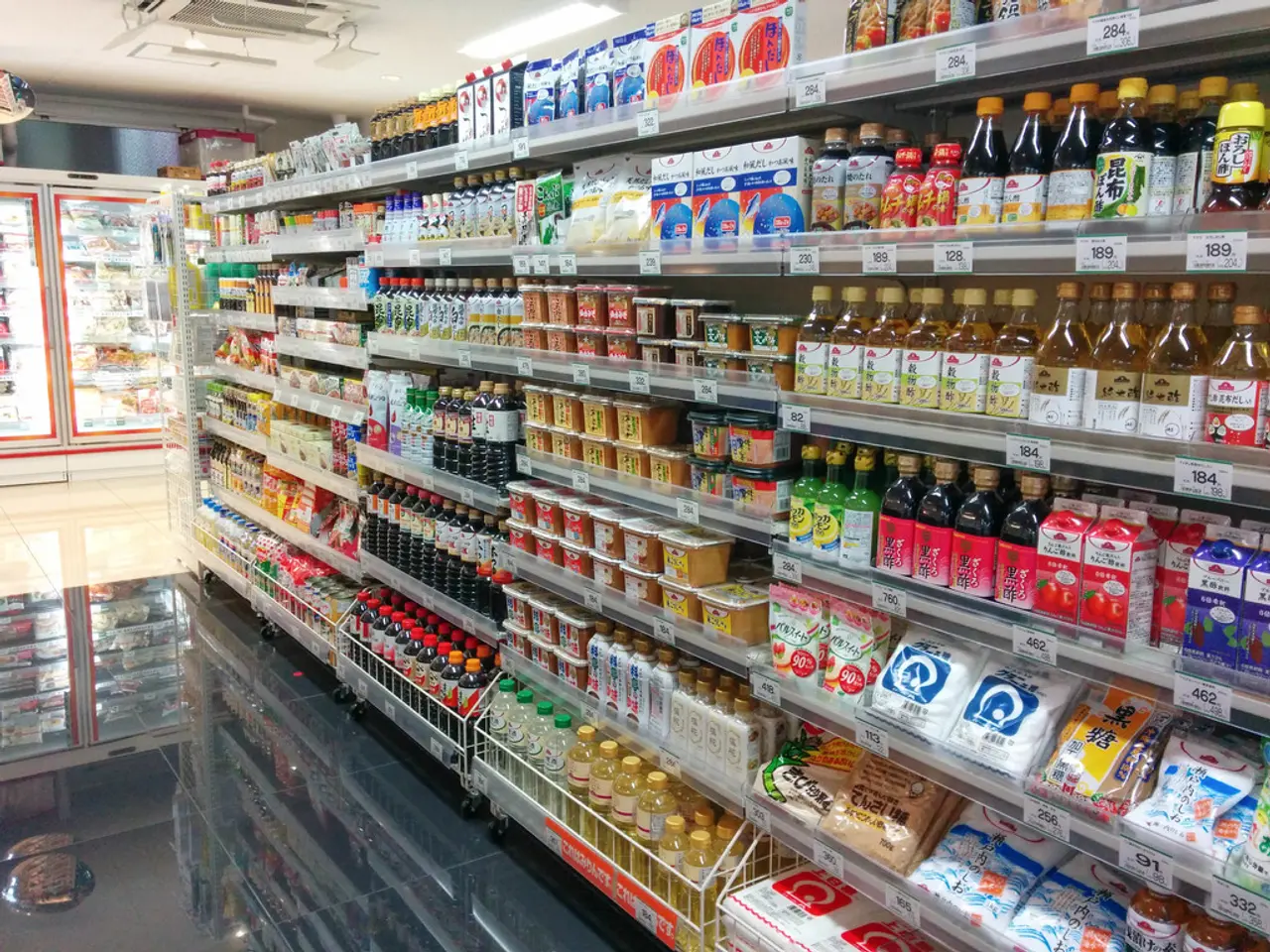Impact of Federal Interest Rates on Your Supermarket Expenses
Grocery prices are on an upward trend, with ground beef prices up by 10.3% year-over-year and egg prices soaring by 27.3% [1]. Coffee lovers are also feeling the pinch as coffee prices have risen by 16.3% [1]. These increases are not isolated incidents, as food prices have surged by a staggering 31% since 2019 [1].
The federal interest rate, while indirectly impacting grocery prices, is not the primary driver of the current price hike. The relationship between interest rates and grocery prices is complex and subtle [1]. When the Federal Reserve raises interest rates, it increases the borrowing costs for grocery retailers to finance inventory. These higher costs can be passed on to consumers in the form of higher grocery prices [1]. However, the larger impacts often come from supply chain challenges, extreme weather, tariffs, and labor dynamics.
Supply chain disruptions, caused by the pandemic and other factors, have led to higher grocery prices [1]. Retailers have kept prices high even after the issues have been resolved, according to an FTC report published last year [1]. Extreme weather events, such as droughts and floods, damage crops, reducing supply and raising prices for affected produce and related packaged foods [1]. Tariffs on imports of certain foods, like coffee, chocolate, and produce that can't be grown in the United States, elevate prices [1][2][5].
Labor shortages, especially in farm workers, due to immigration policies, are also contributing to the problem. This has led to unharvested crops and increased reliance on imports, further pushing prices up [1].
The Federal Reserve’s interest rate policies are responsive to inflation trends, including food prices. When inflation rises, the Fed may raise interest rates to temper demand and control inflation, creating a feedback loop between rates and prices [1][3]. Conversely, lowering rates can reduce borrowing costs and potentially ease pressures on grocery prices but may also risk increasing inflation elsewhere.
In an effort to save money, some shoppers are using cash back cards with elevated rates for groceries, buy now, pay later (BNPL) apps and services, and joining warehouse clubs like Costco or Sam's Club to take advantage of bulk discounts on groceries and household essentials [1]. Stocking up on non-perishable items during sales and planning meals with overlapping ingredients can also help minimize waste and save money [1].
In a positive development, a rate cut by the Federal Reserve might help lower grocery prices, assuming retailers choose to pass the savings on to consumers [1]. Joining a grocery store's loyalty program can provide special deals and early alerts to upcoming discounts [1].
Sources:
[1] Federal Reserve Bank of St. Louis (2022). Grocery Prices and the Federal Reserve. [2] U.S. Department of Agriculture (2021). Tariffs and Agriculture. [3] Federal Reserve (2022). Monetary Policy Report Submitted to the Congress. [4] U.S. Food and Drug Administration (2021). Food Safety Modernization Act. [5] Congressional Research Service (2021). Tariffs and Agriculture: Background and Policy Issues.
Personal finance is being affected by the increasing grocery prices, as food prices have surged by 31% since 2019. This trend is not just due to the federal interest rate, but also supply chain disruptions, extreme weather events, tariffs on imports, and labor shortages. In light of these challenges, some shoppers are adopting strategies like using cash back cards, buy now, pay later apps, and joining warehouse clubs to save money on groceries.




